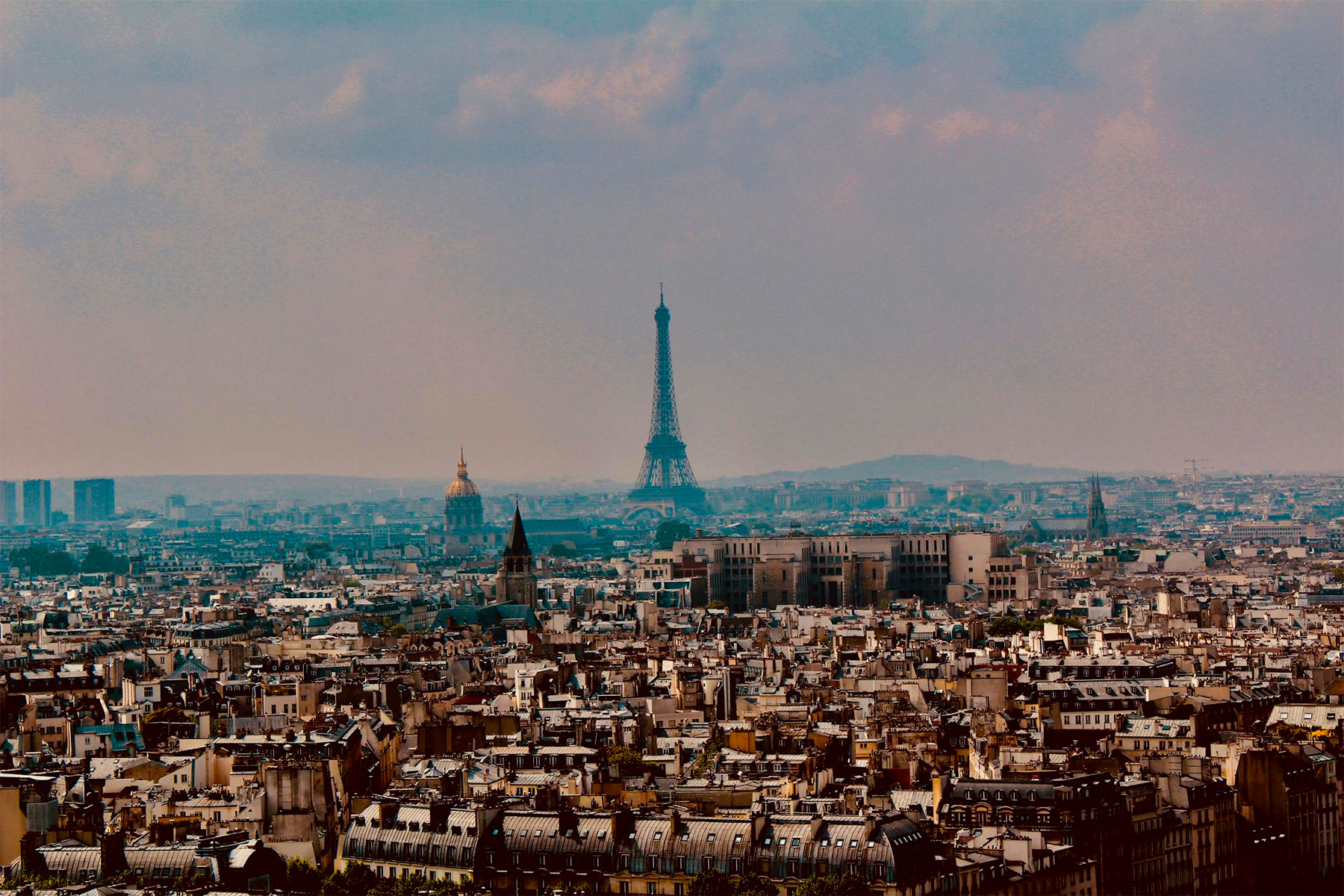Explore the trendy neighborhoods in Paris, their unique vibes, highlights, and practical tips for an authentic experience in the city.
Paris has always been a city of evolving neighborhoods, each with its own charm. In recent years, certain areas have gained recognition for their lively atmospheres, innovative spaces, and cultural hubs. Knowing these trendy places helps visitors connect with Paris’s contemporary side while understanding its local culture. This guide explores the key neighborhoods, detailing what to expect, where to go, and what makes each area unique.
Le Marais: A blend of history and modernity for tourists
Le Marais, situated in the 3rd and 4th arrondissements, is a neighborhood that combines Paris’s rich history with its dynamic, contemporary vibe. For tourists, it offers an engaging mix of attractions, making it one of the city’s most visited areas.
Le Marais was historically the Jewish quarter of Paris, and remnants of this heritage can still be seen today. The Rue des Rosiers is lined with kosher bakeries, delis, and Jewish bookstores. Landmarks like the Musée d’Art et d’Histoire du Judaïsme (€8 / £6.80 / $9) provide deeper insights into this history. Visitors can also explore medieval architecture, such as the Hôtel de Sens, one of Paris’s oldest townhouses.
The area has become a hub for art lovers, with numerous galleries showcasing contemporary works. The Musée Picasso (€14 / £12 / $15.50) displays an impressive collection of Picasso’s masterpieces. Strolling through its cobblestone streets, tourists will discover a blend of classic and modern art in places like the Galerie Perrotin.
Le Marais is also the epicenter of Paris’s LGBTQ+ scene, offering inclusive spaces like bars, clubs, and cafés. Popular venues such as La Mutinerie and Café Cox are known for their vibrant atmosphere. The annual Pride Parade, passing through this area, adds to its celebratory vibe.
Le Marais boasts boutique shopping on streets like Rue Vieille du Temple, featuring independent designers and luxury labels. For food lovers, the neighborhood offers a wide range of options, from falafel at the iconic L’As du Fallafel (€8 / £6.80 / $9) to elegant bistros like Le Colimaçon (average dish: €20 / £17 / $22).
The neighborhood’s pedestrian-friendly streets make it easy to explore. Key attractions like the Place des Vosges, a 17th-century square with symmetrical architecture and manicured gardens, provide a tranquil escape in the heart of the city. Métro lines 1 and 8 offer convenient access, with stops at Saint-Paul and Bastille.
Le Marais caters to tourists looking for a mix of history, culture, and vibrant energy, making it an essential part of any visit to Paris.
Positive aspects
- Vibrant art scene: Home to places like the Picasso Museum (€14 / £12 / $15.50) and contemporary galleries.
- Shopping options: Small designer boutiques and vintage shops line streets like Rue des Francs-Bourgeois.
- Dining variety: A mix of kosher bakeries, trendy cafés, and upscale restaurants, such as Les Philosophes (main dish: around €20 / £17 / $22).
Negative aspects
- Crowded during weekends, especially near Place des Vosges.
- Prices can be high for accommodation and dining.
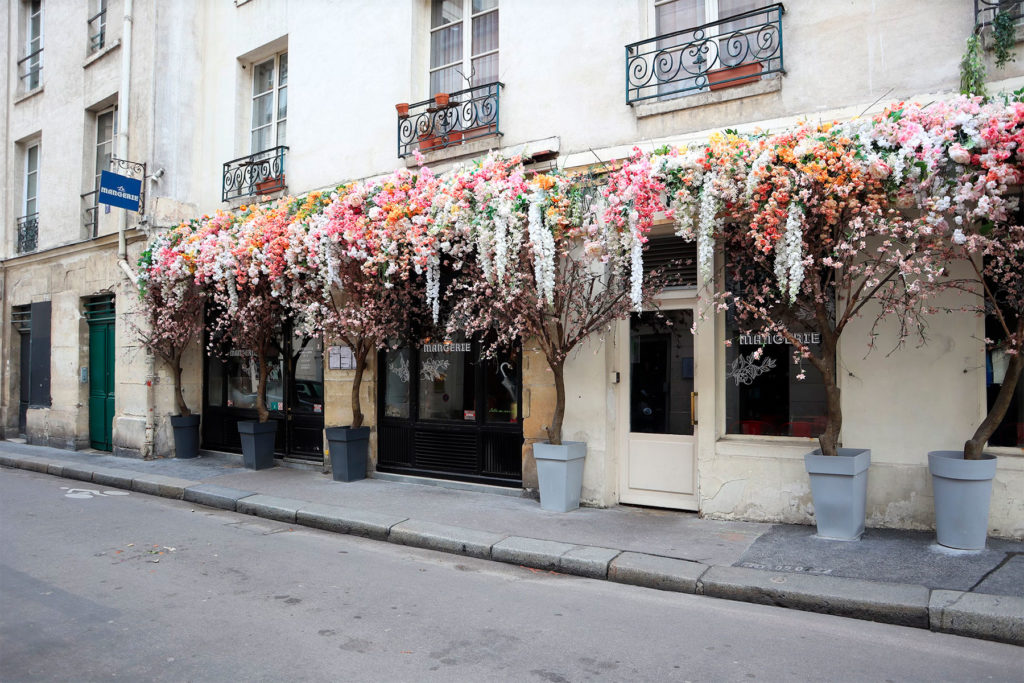
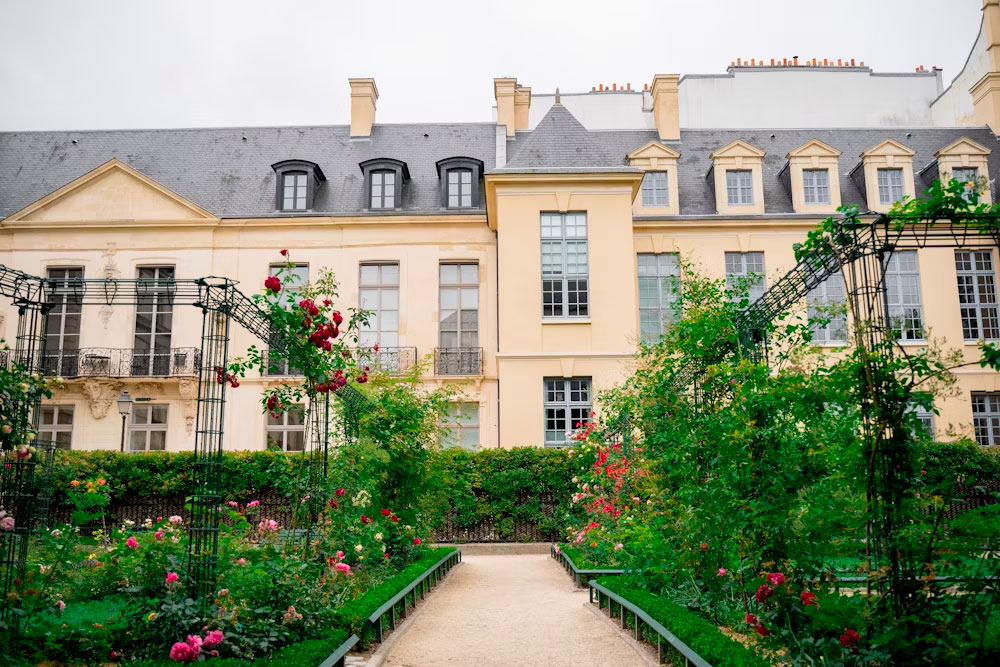
Canal Saint-Martin: A relaxed and creative hotspot for tourists
The Canal Saint-Martin, located in the 10th arrondissement, offers a laid-back alternative to the bustling heart of Paris. With its 4.5 km (2.8 miles) of tranquil waterways, iron footbridges, and tree-lined paths, this area has become a favorite for both locals and visitors looking for a relaxed urban vibe.
Tourists are drawn to the picturesque canal for its peaceful atmosphere. The tree-lined banks are perfect for strolling, picnicking, or cycling, making it a great spot to unwind. Canal-side benches and grassy patches invite visitors to enjoy a slower pace, especially in the spring and summer months.
The canal is also a popular spot for boat tours, allowing tourists to explore its historic locks and bridges. Companies like Paris Canal offer boat trips starting at €23 (£20 / $25), providing a unique perspective of the area.
The neighborhood’s artistic energy is reflected in its street art, galleries, and pop-up events. Walls along the canal are often adorned with murals, adding color and creativity to the area. Tourists can discover exhibitions at nearby spaces like Point Éphémère, a cultural venue hosting live music, art shows, and workshops.
The canal is lined with cafés, bars, and restaurants, offering a mix of traditional French cuisine and international flavors. Popular spots include Chez Prune, a cozy café known for its relaxed atmosphere and affordable brunches (€20 / £17 / $22), and Le Comptoir Général, a quirky bar blending eclectic décor with exotic cocktails (€10–€12 / £8.50–£10 / $11–$13.50). Evening visitors can enjoy the vibrant yet unpretentious nightlife scene, with bars like La Patache offering live music and a local vibe.
Canal Saint-Martin is easily accessible via Métro lines 3, 5, 8, and 9, with stops like République and Goncourt providing direct access. The area’s pedestrian-friendly paths and footbridges make it a pleasure to explore on foot.
The Canal Saint-Martin stands out for its authentic Parisian charm. It feels less tourist-heavy than central neighborhoods, allowing visitors to experience a more local side of Paris. Whether enjoying a lazy afternoon along the canal, a vibrant night out, or a leisurely boat ride, this neighborhood offers a relaxed, creative atmosphere that appeals to all kinds of travelers.
Positive aspects
- Leisure spots: Locals gather along the canal to picnic or walk.
- Bars and cafés: Popular spots include Chez Prune and Le Comptoir Général (cocktails: €8–€12 / £6.80–£10 / $9–$13.50).
- Artistic atmosphere: Street art and pop-up markets add a creative touch.
Negative aspects
- Litter can accumulate along the canal during busy evenings.
- Some areas feel less polished compared to central districts.
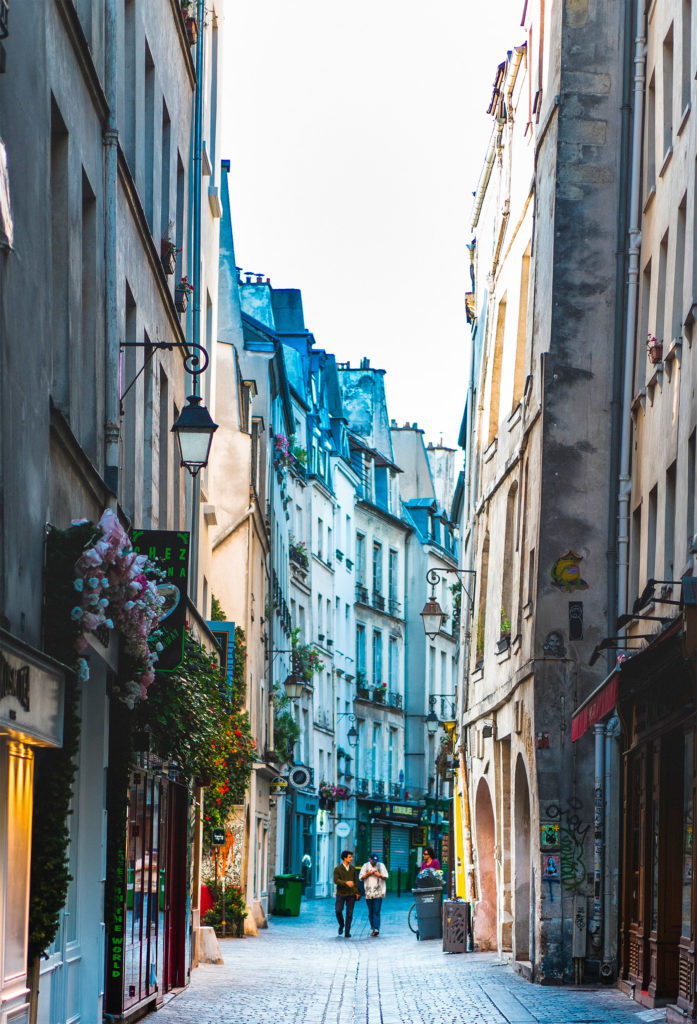
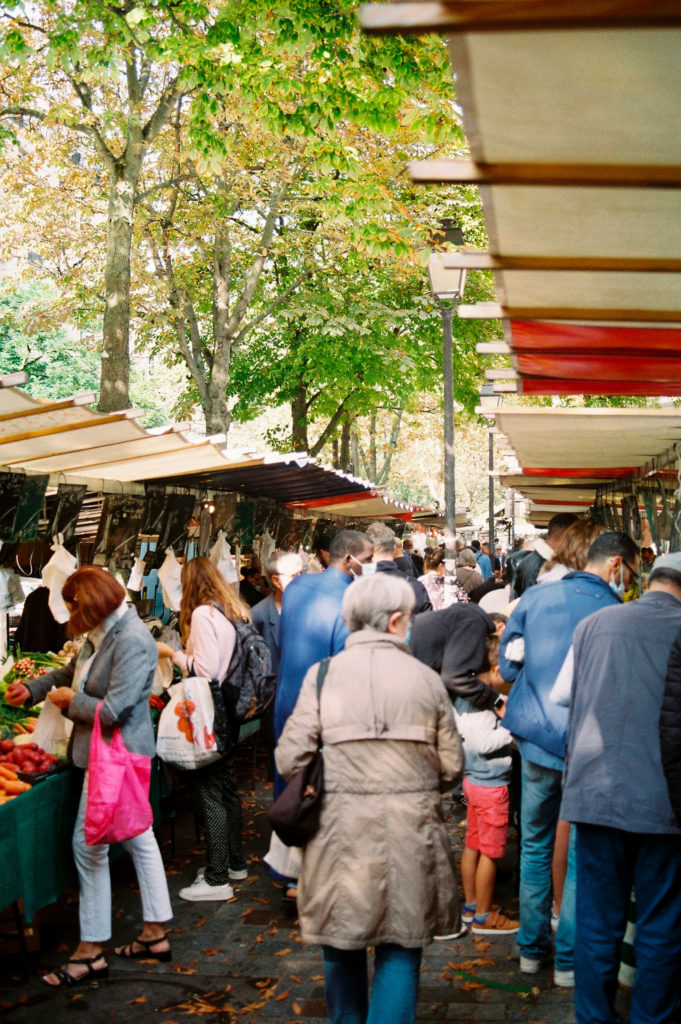
South Pigalle (SoPi): A chic and bohemian destination for tourists
South Pigalle, commonly referred to as SoPi, is situated in the 9th arrondissement, just below the historic Montmartre hill. This neighborhood has transformed over the years from a red-light district to one of Paris’s most fashionable areas, offering tourists a mix of bohemian charm and modern sophistication.
SoPi retains the artistic and bohemian spirit of its Montmartre neighbor while incorporating a more polished, upscale vibe. Visitors can still sense the creative energy in its historic streets, lined with charming old buildings and independent shops. Streets like Rue Henry Monnier and Rue des Martyrs showcase this unique blend of past and present.
For tourists, SoPi is a shopping paradise, with its eclectic mix of high-end boutiques, vintage stores, and concept shops. Independent stores like Sézane on Rue Saint-Fiacre attract fashion-forward visitors seeking unique Parisian styles.
SoPi is also known for its culinary scene, featuring trendy cafes and modern bistros. Popular stops include KB Coffee Roasters, ideal for specialty coffee (€5 / £4.20 / $5.50), and Buvette, a bistro offering small plates and classic French wines (average dish: €12 / £10 / $13). The area’s patisseries, such as Sébastien Gaudard, are also worth visiting for high-quality pastries.
SoPi is a nightlife hub, offering a variety of bars and clubs with a chic yet laid-back vibe. Popular spots include Dirty Dick, known for its tiki-style cocktails (€13 / £11 / $14), and Lulu White, a jazz bar with a speakeasy atmosphere. The area is also home to La Cigale, a concert venue showcasing local and international music acts.
The architecture in SoPi reflects its elegant transformation, with Haussmannian buildings and well-maintained streets. This aesthetic appeal is part of the neighborhood’s charm, offering visitors a balance between historical beauty and modern style.
SoPi is easily accessible by Métro lines 2, 12, and 13, with stations like Pigalle and Saint-Georges providing direct access. The compact nature of the neighborhood makes it perfect for walking, allowing visitors to explore its lively streets at their own pace.
South Pigalle attracts a mix of locals and visitors seeking a sophisticated yet unpretentious atmosphere. It’s ideal for tourists looking to enjoy Paris’s fashionable side while still soaking up the creative energy that defines the city. With its unique blend of history, culture, and modern trends, SoPi offers a chic and bohemian experience that appeals to diverse travelers.
Positive aspects
- Boutiques and cafes: Streets like Rue des Martyrs are filled with independent shops and patisseries like Sébastien Gaudard.
- Nightlife: Cocktail bars such as Dirty Dick (drinks: €13 / £11 / $14) are popular among locals.
- Architecture: Classic Haussmannian buildings dominate, offering aesthetic appeal.
Negative aspects
- Prices for food and drinks are relatively high.
- Limited green spaces in the immediate area.
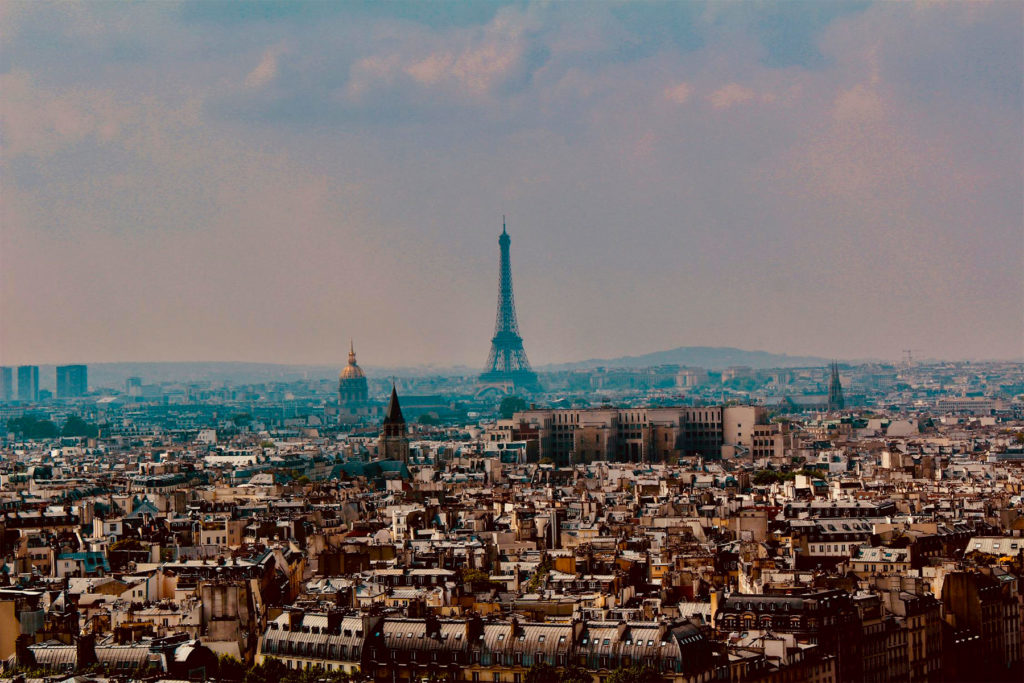
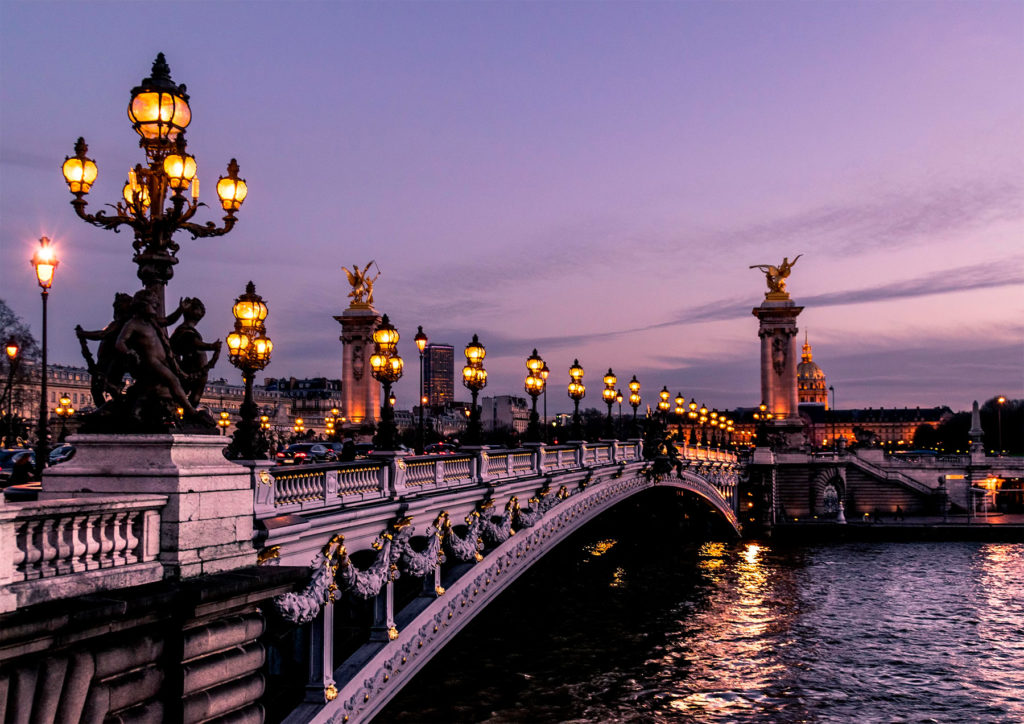
Belleville: A multicultural and edgy neighborhood for tourists
Belleville, spanning the 19th and 20th arrondissements, offers a unique and authentic side of Paris, far removed from the polished central districts. Known for its working-class roots and strong immigrant influences, this neighborhood boasts a vibrant, multicultural atmosphere, making it an intriguing destination for tourists seeking something different.
Belleville’s streets reflect its diverse heritage, with influences from North Africa, China, and the Middle East blending seamlessly with Parisian culture. Tourists can experience this multicultural vibe along Rue de Belleville, where Chinese restaurants, Moroccan bakeries, and French cafés sit side by side.
The Belleville Market, held every Tuesday and Friday on Boulevard de Belleville, is a must-visit for its lively ambiance and affordable food stalls. It’s an excellent spot to sample dishes like freshly made dumplings or couscous for under €10 (£8.50 / $11).
Belleville has become a hub for street art and alternative culture, attracting young artists and creatives. Tourists can explore the Rue Dénoyez, famous for its colorful murals and graffiti. Local galleries like Galerie Le Monte-en-l’Air showcase contemporary art and photography.
The area’s edgy vibe is also reflected in its live music venues and independent theaters, such as La Bellevilloise, where visitors can enjoy concerts, exhibitions, and even dance nights (entry fees: €10–€20 / £8.50–£17 / $11–$22).
For a quieter side of Belleville, tourists can visit the Parc de Belleville, a 4.5-hectare (11-acre) park located on one of the city’s highest hills. The park offers stunning panoramic views of Paris, including landmarks like the Eiffel Tower in the distance. It’s a peaceful spot to relax and enjoy the scenery after exploring the bustling streets below.
Belleville is a haven for budget-friendly dining, making it appealing to travelers looking for affordable yet delicious food. Chinese restaurants like Wenzhou serve generous portions for around €15 (£13 / $16). Additionally, Middle Eastern eateries offer fresh falafel wraps and shawarma for €5 (£4.20 / $5.50).
Belleville is easily reached via Métro lines 2 and 11, with stops like Belleville and Couronnes providing convenient access. While the area is walkable, some streets are steep, so comfortable footwear is recommended.
Belleville’s authentic and multicultural energy sets it apart from more tourist-heavy neighborhoods. For visitors seeking an alternative experience, the area offers a blend of cultures, art, and affordable options that provide a richer understanding of Paris’s diversity. Whether exploring its vibrant markets, sampling international cuisine, or enjoying its artistic atmosphere, Belleville is an essential stop for those looking to see a different side of the city.
Positive aspects
- Diverse food scene: Affordable options like dumpling spots on Rue de Belleville (meals around €10 / £8.50 / $11).
- Art hubs: Studios and street art create a visually interesting environment.
- Green spaces: Parc de Belleville offers panoramic views of the city.
Negative aspects
- Parts of Belleville may feel less maintained compared to other neighborhoods.
- Can be overwhelming for those seeking a quieter atmosphere.
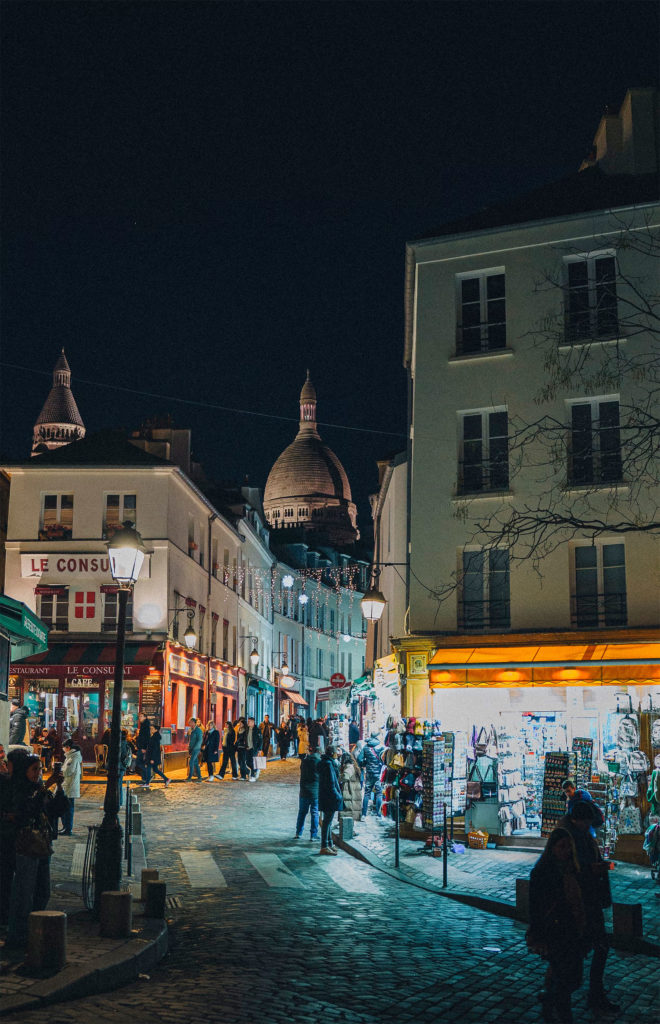
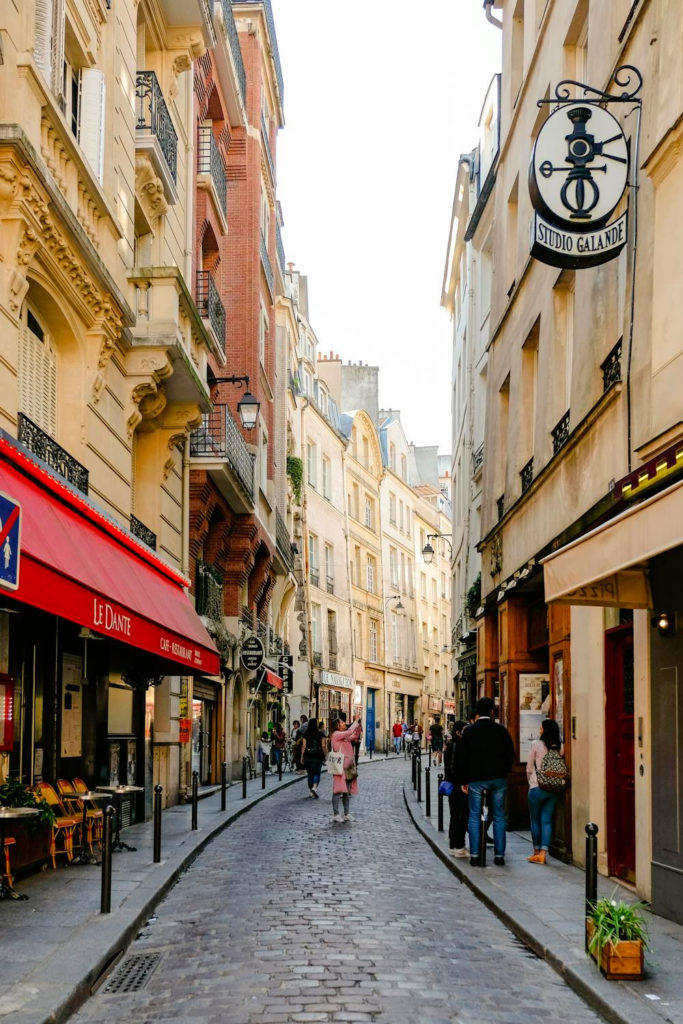
Montmartre: Where timeless charm meets modern trends
Montmartre, located in the 18th arrondissement, is one of Paris’s most iconic neighborhoods. Known for its artistic history and the Sacré-Cœur Basilica, Montmartre has evolved into a destination that combines timeless beauty with a modern, trendy vibe, making it a must-visit for tourists.
Montmartre’s streets are steeped in history, having been home to legendary artists such as Picasso, Van Gogh, and Toulouse-Lautrec. Visitors can explore this artistic heritage at places like the Musée de Montmartre (€13 / £11 / $14.50), which features exhibits on the neighborhood’s bohemian past.
Walking through Place du Tertre, tourists will encounter contemporary artists showcasing their works, maintaining the area’s artistic spirit. However, the square can feel crowded and tourist-heavy, especially during peak hours.
The Sacré-Cœur Basilica, perched atop Montmartre Hill, is one of Paris’s most recognizable sites. Entry is free, but a climb up the dome (€7 / £6 / $7.50) rewards visitors with panoramic views of the city, stretching up to 30 km (18 miles) on clear days. The nearby Saint-Pierre Church, one of Paris’s oldest churches, is another historical gem often overlooked by tourists.
Montmartre has embraced contemporary trends, especially in its cafés and boutiques. Streets like Rue Lepic and Rue des Abbesses feature independent shops and modern bistros. Notable stops include Hardware Société, offering gourmet brunch for around €20 (£17 / $22), and Le Refuge des Fondus, famous for its quirky wine-in-baby-bottles concept (€25 / £21 / $28 per person).
For shopping, vintage stores and local designer boutiques provide unique finds. The Marché Saint-Pierre remains a go-to spot for fabric lovers, blending the old and new.
Montmartre is equally lively after dark, with a mix of historic cabarets and trendy bars. The Moulin Rouge, although tourist-oriented, remains a classic experience with ticket prices starting at €100 (£85 / $110). For a more casual evening, bars like La Fourmi offer affordable drinks (€8–€10 / £6.80–£8.50 / $9–$11) in a relaxed atmosphere.
Reaching Montmartre is easy via Métro lines 2 and 12, with stops like Abbesses and Anvers. Be prepared for steep hills and cobblestone streets, so comfortable footwear is recommended. For those with mobility concerns, the Montmartrobus provides convenient transport within the neighborhood.
Montmartre offers a unique blend of Parisian history and contemporary culture, appealing to a wide range of tourists. While its iconic landmarks and artistic legacy are timeless, its trendy cafés, shops, and nightlife ensure it stays relevant for modern visitors. Whether you’re admiring the view from Sacré-Cœur, exploring its bohemian roots, or enjoying a modern dining experience, Montmartre encapsulates the past and present of Paris in a way few neighborhoods can.
Positive aspects
- Artistic legacy: Streets like Rue Lepic feature art studios and galleries.
- Cafés and bistros: Spots like Le Consulat maintain a classic Parisian feel (coffee: €4 / £3.40 / $4.50).
- Hidden gems: Vineyards like Clos Montmartre offer unique experiences.
Negative aspects
- Over-tourism impacts certain spots like Place du Tertre.
- Hilly terrain may challenge visitors with mobility concerns.
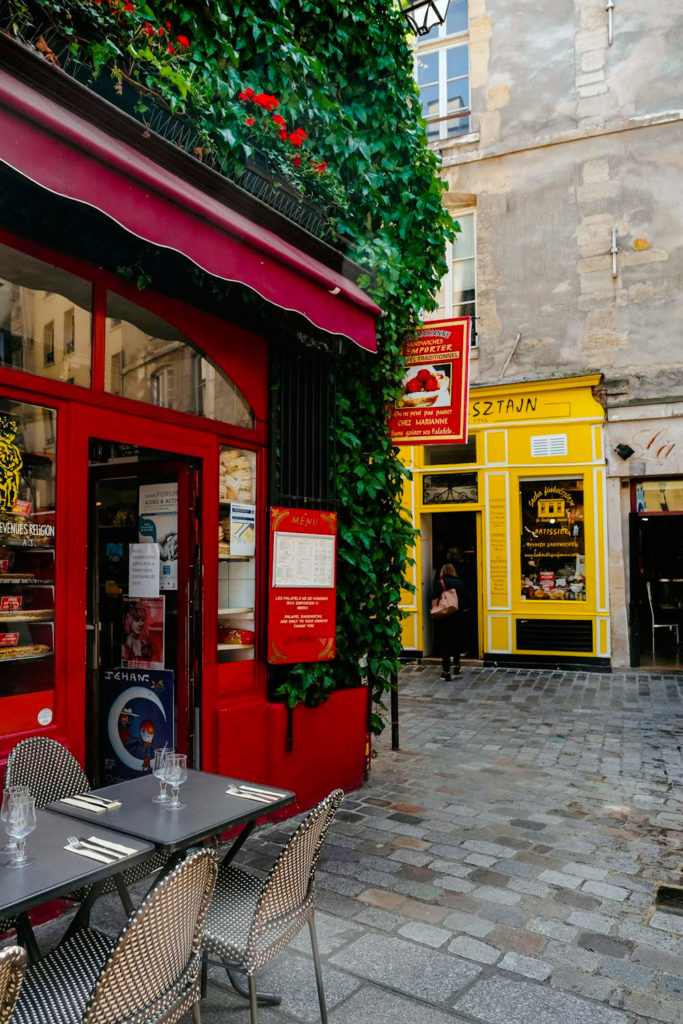
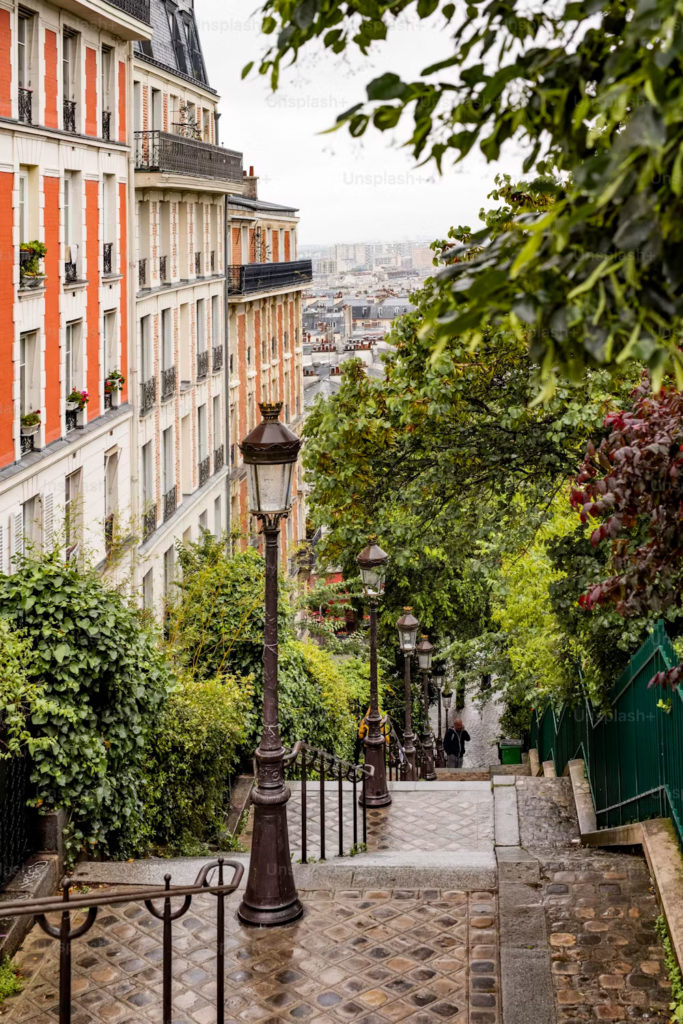
Oberkampf: Nightlife and local charm for tourists
Located in the 11th arrondissement, Oberkampf has built a reputation as one of Paris’s liveliest neighborhoods. Known for its vibrant nightlife and unpretentious atmosphere, it’s a favorite destination for locals and tourists seeking a mix of authentic Parisian life and energetic entertainment.
Oberkampf’s nightlife scene is one of its biggest draws, offering a diverse range of bars, clubs, and live music venues. Streets like Rue Oberkampf and Rue Saint-Maur are lined with spots catering to all tastes.
- Live music: Venues such as Le Bataclan (€30–€50 / £25–£42 / $33–$55, depending on the act) and La Mécanique Ondulatoire attract music lovers with genres ranging from indie rock to electronic.
- Bars: Popular options include Le Perchoir, a rooftop bar with panoramic views (cocktails: €13 / £11 / $14), and Ave Maria, known for its vibrant decor and international cocktails.
- Clubs: Late-night revelers often head to Nouveau Casino, a club featuring top DJs and live performances.
Oberkampf’s dining scene offers a mix of trendy and traditional options. Local bistros like Astier serve classic French dishes such as coq au vin (€30 / £25 / $33), while hip eateries like Clamato focus on fresh seafood and innovative small plates. For more affordable meals, creperies and falafel shops are scattered throughout the area, catering to budget-conscious travelers.
Oberkampf also attracts visitors with its street art and cultural hubs. The Rue de la Fontaine-au-Roi is a popular spot to see evolving graffiti and murals. Art lovers can explore creative spaces like Atelier des Lumières, a digital art museum featuring immersive exhibitions (€16 / £14 / $18).
Unlike more tourist-heavy areas, Oberkampf maintains a local and laid-back feel. Cafés like Café Charbon, with its retro decor and lively ambiance, offer a chance to experience authentic Parisian life. The neighborhood’s unpolished yet vibrant character makes it appealing to those seeking a more genuine experience.
Oberkampf is easily accessible via Métro lines 3, 5, and 9, with stops such as Oberkampf and Parmentier. The area is best explored on foot, allowing visitors to discover its hidden gems and enjoy the lively streets.
Oberkampf is ideal for tourists looking to experience Paris’s nightlife and cultural diversity without the pretension of trendier districts. With its mix of affordable bars, live music, and local charm, the neighborhood offers a slice of authentic Paris that combines fun and relaxation. Whether enjoying a drink at a rooftop bar, catching a live show, or exploring its vibrant streets, Oberkampf is a dynamic yet approachable destination for visitors.
Positive aspects
- Bars and live music: Venues like Le Bataclan and rooftop bars offer varied entertainment (entry fees: €10–€20 / £8.50–£17 / $11–$22).
- Local atmosphere: Frequented more by Parisians than tourists.
- Affordability: Cheaper food and drinks compared to Marais or SoPi.
Negative aspects
- Can feel too loud or crowded during weekends.
- Limited attractions for daytime exploration.
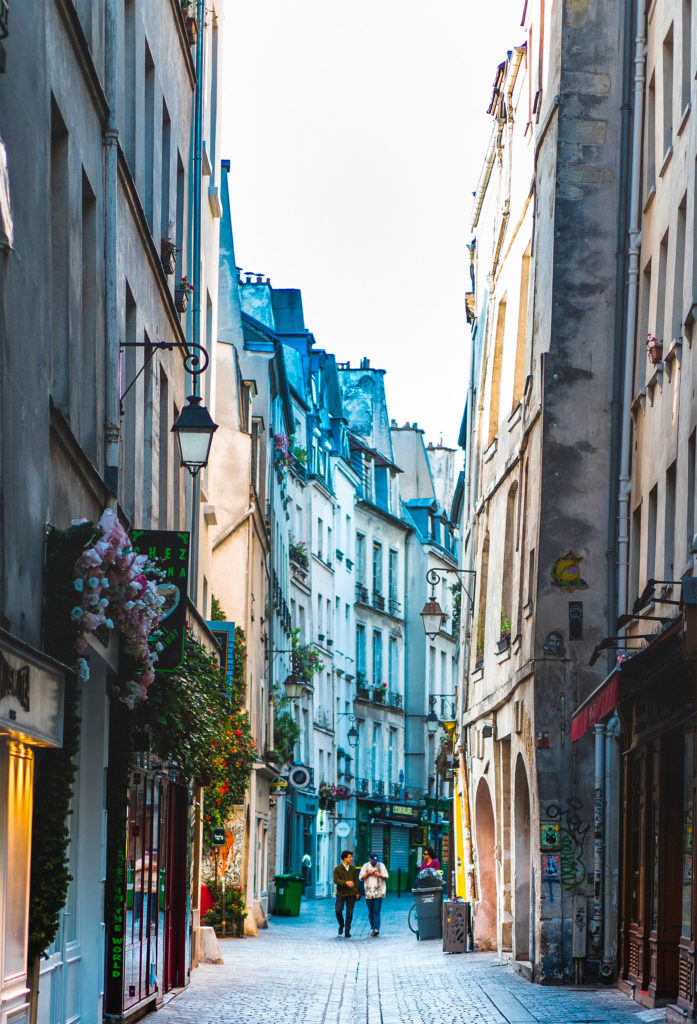
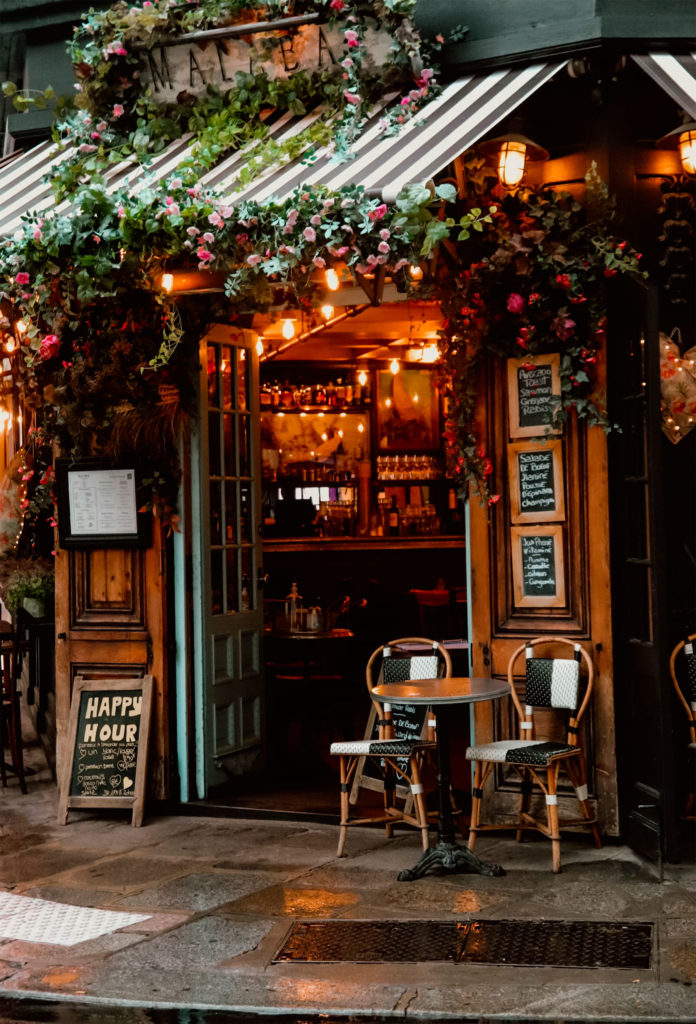
La Villette: Innovation and leisure for tourists
Situated in the 19th arrondissement, La Villette offers a unique combination of cultural attractions, modern design, and expansive green spaces, making it a perfect destination for families and those seeking a more relaxed yet innovative side of Paris.
La Villette is home to some of Paris’s most modern cultural institutions, drawing tourists interested in art, science, and music.
- Cité des Sciences et de l’Industrie: Europe’s largest science museum (€12 / £10 / $13.50) features interactive exhibits, a planetarium, and even a submarine. It’s an engaging stop for families with children.
- Philharmonie de Paris: This concert hall, designed by Jean Nouvel, hosts performances from classical to contemporary music, with ticket prices ranging from €10 to €100 (£8.50–£85 / $11–$110).
- La Géode: A giant geodesic dome showing immersive 3D and IMAX films (entry: €12 / £10 / $13.50).
La Villette is dominated by the Parc de la Villette, a sprawling park of 55 hectares (136 acres). This urban park blends leisure with modern design, featuring themed gardens, futuristic pavilions, and open-air activities.
- Outdoor cinema: During summer, the park hosts an open-air film festival where visitors can watch movies under the stars for free.
- Boating and playgrounds: Families can rent pedal boats or let children enjoy the many innovative play areas.
- Cycling and walking paths: The park connects to the Canal de l’Ourcq, offering scenic cycling and walking routes.
La Villette has a variety of cafés and restaurants, offering everything from casual dining to more upscale options. Popular spots include:
- Pavillon des Canaux: A quirky café with themed rooms, serving coffee and light bites (average meal: €15 / £13 / $16).
- Paname Brewery Company: Overlooking the canal, this microbrewery serves craft beers and hearty dishes (beers: €6–€8 / £5–£6.80 / $6.50–$9).
The park also hosts food festivals and markets, particularly in summer, showcasing Paris’s culinary diversity.
La Villette regularly hosts concerts, exhibitions, and festivals, making it an ever-changing destination. Events like the Jazz à La Villette Festival draw music enthusiasts, while temporary art installations keep the area fresh and exciting.
La Villette is easily accessible via Métro lines 5 and 7, with stops like Porte de Pantin and Porte de la Villette providing direct access. The expansive park is ideal for leisurely exploration, so comfortable shoes are recommended.
La Villette offers a unique combination of culture, leisure, and innovation, making it a standout neighborhood in Paris. Its modern attractions and large green spaces appeal to families, couples, and solo travelers alike. Whether exploring the science museum, attending a concert, or enjoying a picnic by the canal, La Villette provides a refreshing and versatile experience for tourists seeking both relaxation and cultural enrichment.
Positive aspects
- Cultural venues: Cité des Sciences (€12 / £10 / $13.50) and Philharmonie de Paris are major draws.
- Outdoor areas: Parc de la Villette spans 55 hectares (136 acres) for picnics and activities.
- Event space: Hosts open-air cinemas and festivals during summer.
Negative aspects
- Distance from central Paris may deter short-term visitors.
- Parts of the park feel sparse compared to other green areas.
Practical tips for visiting trendy neighborhoods in Paris
- Timing matters: Weekdays are quieter in areas like Le Marais and Montmartre.
- Budget considerations: Dining costs vary widely—expect €20–€50 (£17–£42 / $22–$55) for mid-range meals in most neighborhoods.
- Transport: Use the Paris Métro for easy access to all neighborhoods. Tickets cost €2.10 (£1.80 / $2.30) for a single trip.
- Local etiquette: Explore less-touristy spots for a more authentic experience.
Paris’s trendy neighborhoods offer a variety of atmospheres, from the artistic charm of Le Marais to the nightlife of Oberkampf. Understanding the strengths and challenges of each area ensures visitors make the most of their time in the city. Whether exploring for art, food, or nightlife, these neighborhoods reflect Paris’s evolving identity.
XperienceFrance is your travel specialist in France.
